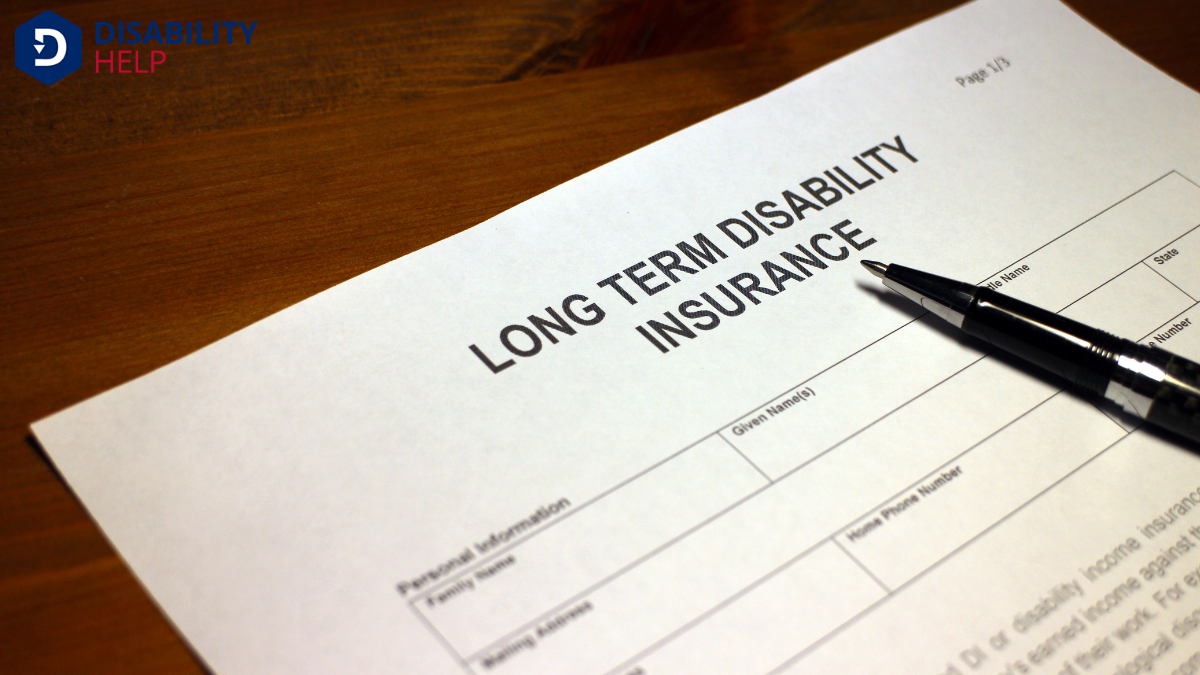We can often extend our short-term disability coverage by understanding our policy specifics. Start by checking the insurance provider's terms, as the nature of our medical condition and supporting documentation can influence possibilities. If an extension isn't granted, remember there are alternatives like using savings or community resources. Knowing our legal rights guarantees better preparation for any change to long-term options. Let's explore how all these pieces fit into our strategy.
Key Takeaways
- Review your insurance policy's terms for specific guidelines on extending short-term disability coverage.
- Gather detailed medical documentation to support the need for an extension from your healthcare provider.
- Contact the insurance provider to understand their process and requirements for requesting an extension.
- Explore state regulations and insurer policies that may influence the extension decision.
- Maintain open communication with your employer for additional guidance and support during the extension request process.
Understanding the Limits of Your Current Coverage
How well do we really understand the limits of our current short-term disability coverage? Often, we assume it’ll cover us fully during challenging times, but that’s not always the case. We must closely examine the policy details.
Typically, coverage spans a specific period, often ranging from a few weeks to a few months. We should verify the exact duration and the percentage of our salary that it covers. It’s essential to know what’s included and any exclusions or waiting periods that might apply.
Understanding these details helps us avoid unexpected surprises when we need support the most. Let’s review our policy together, ensuring we comprehend the terms. With this knowledge, we can make informed decisions about our financial security.
Factors Influencing the Possibility of an Extension

When evaluating the possibility of extending short-term disability coverage, several key factors come into play.
First, we need to take into account our policy's specific terms and conditions. Each policy is different, so it's vital to review what our plan explicitly allows.
Additionally, the nature and severity of our medical condition can heavily influence extension options. If our condition is complex or requires prolonged recovery, it might justify an extension.
Communication with our healthcare provider is essential, as their input will support our case.
Moreover, the insurer's policies and any state regulations may impact the decision. Understanding these factors helps us gauge the likelihood of an extension, providing clarity and better preparing us for the next steps in our coverage journey.
Steps to Take for Requesting an Extension
Having considered the factors that might influence an extension of our short-term disability coverage, let's focus on the steps to request such an extension.
First, we should contact our insurance provider to understand their specific process. It’s essential to gather relevant medical documentation that supports the need for extended coverage, including detailed statements from healthcare providers.
We should also review our original policy terms to guarantee we’re aware of any requirements or limitations. Once prepared, we must submit a formal request, along with the necessary documents, within the timeframe specified by the insurer.
Keeping open communication with our employer can also help, as they might need to provide additional information or approval. By staying organized and proactive, we increase our chances of a successful extension.
Alternative Options if Extension Is Not Possible
If an extension of our short-term disability coverage isn't possible, we should explore alternative options to guarantee financial stability during recovery.
First, let's tap into our savings or emergency funds, if available, to cover essential expenses.
We can also consider seeking assistance from family or friends who might be able to offer temporary support.
Another approach is to contact creditors to negotiate payment plans or deferments, helping to ease the immediate financial burden.
Additionally, community resources or non-profit organizations might offer aid or guidance tailored to our situation.
Finally, exploring part-time or remote work opportunities that accommodate our health can provide supplemental income.
Navigating the Transition to Long-Term Disability

As we shift from short-term to long-term disability, we must first evaluate our eligibility criteria to guarantee a smooth process.
It's essential to understand the specifics of our insurance policies, so we're fully aware of our rights and obligations.
Let's also coordinate our medical documentation carefully, as accurate and complete records are fundamental for approval.
Evaluating Eligibility Criteria
How do we determine if someone is eligible for long-term disability after exhausting short-term benefits? First, we need to understand the medical condition's severity and duration. A healthcare provider's documentation plays an essential role, as it should demonstrate that the disability persists beyond the short-term period.
We'll also assess if the individual can perform their job or any job they're qualified for, considering skills and experience. It's important to review the waiting or elimination period, as long-term disability typically requires a specific time frame before benefits start.
Let's make sure we're thorough with any necessary forms and filings, as timely submissions can impact the approval process. By understanding these criteria, we can effectively navigate the shift to long-term support.
Understanding Insurance Policies
When shifting from short-term to long-term disability coverage, we must thoroughly understand the intricacies of insurance policies to guarantee a smooth process.
First, let's review our current policy details. We should identify the specific terms that dictate how and when the shift to long-term disability occurs. It’s essential to note any waiting periods and verify we meet all conditions laid out by our insurer.
Additionally, let's compare different policies, as they vary considerably. Some might offer better benefits or have fewer restrictions. We need to be aware of any potential changes in premiums or coverage limits.
Coordinating Medical Documentation
While we’ve explored the nuances of insurance policies, another key step is guaranteeing our medical documentation is in order for the shift to long-term disability.
We’ll want to gather all relevant medical records, including doctor’s reports and test results, that clearly outline our condition and its impact on our daily life. It’s essential to work closely with our healthcare providers to verify that these documents are thorough and up-to-date.
We should also verify that our medical history aligns with the definitions and requirements of our long-term disability policy. By maintaining open communication with our doctors and insurers, we can help prevent delays and misunderstandings.
This preparation aids in a smoother shift, guaranteeing we continue to receive the support we need.
Legal Considerations and Your Rights
As we explore our rights under short-term disability coverage, it's essential to understand both the regulations that govern disability coverage and our employer's specific policy guidelines.
We should familiarize ourselves with how these rules apply to us and guarantee we're aware of the steps to take if we need to appeal a decision.
Disability Coverage Regulations
Maneuvering the landscape of disability coverage regulations requires an understanding of the legal considerations and our rights as employees.
It's vital we understand that federal and state laws offer protections to guarantee we're not left in the dark. The Americans with Disabilities Act (ADA)A U.S. law that prohibits discrimination against individuals with disabilities in all areas of publi... and the Family and Medical Leave Act (FMLA)A U.S. law that provides eligible employees with unpaid, job-protected leave for family and medical ... are key players. They provide a safety net, guaranteeing our jobs are protected while we're dealing with a disability.
Additionally, state-specific regulations might offer further insights or benefits, and it's important we familiarize ourselves with those.
Let’s remember our rights include the ability to request reasonable accommodationsModifications or adjustments in healthcare settings to support patients with disabilities. if needed.
Employer Policy Guidelines
Steering through employer policy guidelines for short-term disability coverage requires keen attention to both legal considerations and our rights.
Understanding these guidelines empowers us to make informed decisions. Let's break down what we need to know:
- Review the Policy Document: Familiarize ourselves with coverage duration, eligibility criteria, and any clauses that might affect extensions. This document is our roadmap.
- Know Our Rights: Federal laws like the Americans with Disabilities Act and the Family and Medical Leave Act can intersect with employer policies, offering additional protection.
- Communicate with HR: Open dialogues with our Human Resources department can clarify policy specifics, ensuring we’re aware of any procedural nuances or exceptions.
Appeal Process Steps
Steering through the appeal process for short-term disability claims can be intimidating, but understanding our legal rights and the necessary steps can make it manageable.
First, we must review the denial letter carefully to identify the reasons for rejection. This helps us address specific issues in our appeal.
Gather all supporting documents, like medical records and doctor’s notes, that strengthen our case.
Next, we should adhere to any deadlines specified in the denial letter and submit our appeal promptly.
We can write a clear appeal letter outlining why we believe our claim should be approved, referencing any evidence.
If needed, consulting with a legal professional can provide guidance.
Conclusion
In wrapping up, we've explored how to navigate extending short-term disability coverage. By understanding your current plan, considering factors for extension, and taking proactive steps, we can better advocate for our needs. If an extension isn't feasible, we'll explore alternative paths and shift options, including long-term disability. Remember, knowing our legal rights empowers us to make informed decisions. Let's guarantee we're equipped with the knowledge to secure the support we need.






